Home > Other Places To Visit In Scotland > Arbroath Abbey
Photographs of Arbroath Abbey with a history of Arbroath Abbey and visitor information. Includes details and photos of the Declaration of Arbroath.
Arbroath Abbey in Scotland is located near the town centre of Arbroath on Abbey Street and is easily signposted. There is parking and several disabled car park spaces immediately outside Arbroath Abbey. A larger council run car park can be found to the left of the Abbey and is only a few minutes walk away.

Follow us on: Instagram, X and Facebook.
Contact Me.
My new novel:
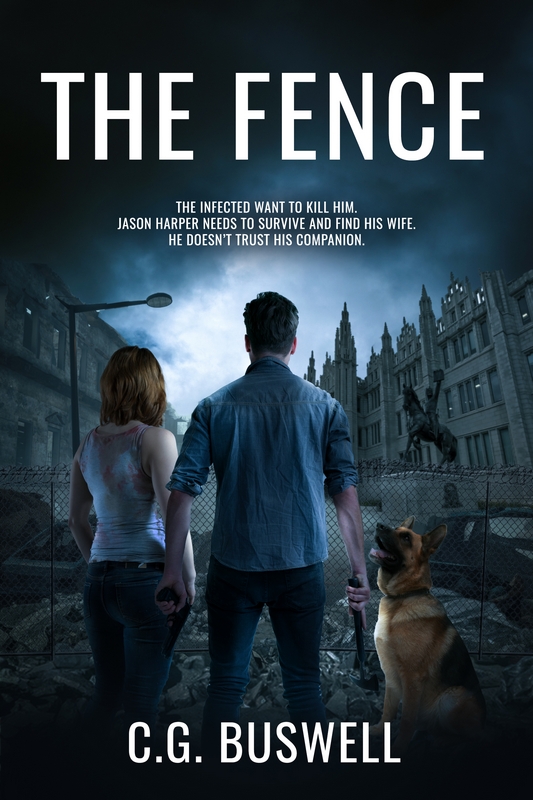
The Aberdeen skies are under attack from an enemy jet. It is spilling a strange yellow smoke. Minutes later, people start killing each other.
Former Royal Air Force Regiment Gunner Jason Harper witnesses this and then his wife, Pippa, telephones him, shouting that she needs him. They then get cut off. He sets straight out, unprepared for the nightmare that unfolds during his journey. Everyone seems to want to kill him.
Along the way, he pairs up with fellow survivor Imogen. But she enjoys killing the living dead far too much. Will she kill Jason in her blood thirst? Or will she hinder his journey through this zombie filled dystopian landscape to find his pregnant wife?
The Fence is the first in this series of post-apocalyptic military survival thrillers from the torturous mind of local horror and science fiction novel writer C.G. Buswell.
Download Now.
Buy the Paperback.
Entrance to Arbroath Abbey is via the Historic Scotland visitor centre and gift shop. A guide book is available and Historic Scotland members can claim 20% off the price of this and anything else bought in the souvenir shop.
Arbroath Abbey is now in ruins but a tour around gives visitors an idea of how magnificient this Abbey would have been. As can be seen in the aboutaberdeen photos on this review page parts of the Abbey can still be accessed. The outside is suitable for disabled visitors though there are many stairs to access parts of the ruins.
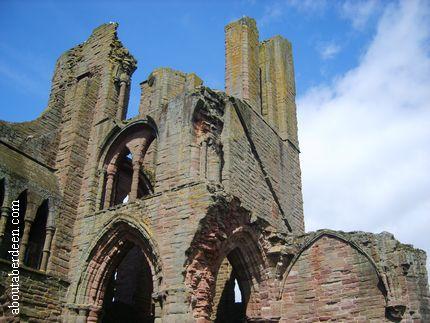
The history of Arbroath Abbey dates back to the year 1178 when King William I founded the monastery. As well as expanding his control through Scotland he wanted to honour the memory of his childhood friend Saint Thomas Becket who was murdered on 29 December 1170 in Canterbury Cathedral in England. Arbroath Abbey was built to what could be described as Gothic Architecture with three towers and the length of the Abbey was about 90 metres. The dedication of the church took place on the 8 May 1233. The two flanking towers were identical but the North Tower was raised after storm damage in 1272 which also destroyed parts of St Andrews Cathedral.
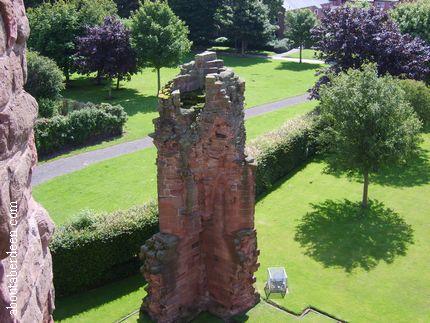
Modern visitors to Arbroath Abbey enter the are through a glass door at the visitor centre and this gives access directly to the nine bay nave where the remains of column pillars can be seen. This are was the only part of the Abbey that the laity would have had access.
Tironensian monks from Kelso Abbey in the Scottish Borders were invited by King William I whose nicknames were the Lion, Garbh (the Rough) and King of Scots. The monks thrived and the town of Arbroath expanded and they were largely responsible for the maintenance of Arbroath Harbour. So large did Arbroath Abbey become about 35 parish churches evolved around it.
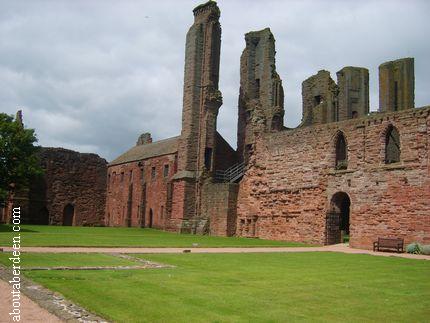
King William I died at Stirling on 4 December in 1214 and was buried at Arbroath Abbey. He was succeeded by his son Alexander II.
There were many Abbots of Arbroath. This included Cardinal Beaton whose murder and ghost can be read on the aboutaberdeen Ethie Castle and St Andrews Ghost pages. Notorious Abbots included Robert the eighth Abbot who was expelled by his monks in the year 1267.
Declaration of Arbroath
The Declaration of Arbroath for Scottish independence from the English was written on 6 April 1320 by a clerk of the Abbot Bernard who was the Chancellor of King Robert I. The document that was written in Latin is on display at Arbroath Abbey and can be seen in the photo below. It was dispatched to Rome to Pope John XXII and the seals of 51 magnates and nobles were inserted to the bottom of the letter.
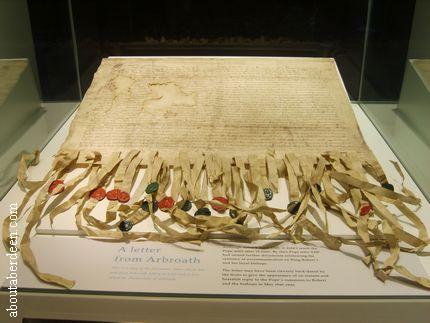

Have you seen my beautiful golden retriever Lynne out and about in Aberdeen? Ask her for a high-five! She's a Bravehound PTSD assistance dog, so we'll often be in shops, restaurants, and the cinema together.
We've written a book where I talk about growing up in Aberdeen and then joining the army to be a medic and nurse, and developing military Post Traumatic Stress Disorder.
I also talk about losing my son to suicide and the therapy I have had at Royal Cornhill Hospital and grief support groups in Aberdeen.
The author, Damien Lewis, said of Lynne:
"A powerful account of what one dog means to one man on his road to recovery. Both heart-warming and life-affirming. Bravo Chris and Lynne. Bravo Bravehound."
Download.
Buy the paperback.
During the 1400s a sacristy was built into the Abbey Church by Abbot Walter Paniter. He also helped to improve the standards in Scotland's Benedictine Monasteries.
During the Protestant Reformation of 1560 ArbroathAbbey began to decline though the Abbot's House largely survived because it had an alternative use as a Manse for the Parish Church. In later years it became a thread factory and then a school. Many other buildings were not so lucky. For example all of the infirmary and some of the cloister was demolished. The burial ground used exclusively for the monks was thereafter used as a graveyard for Arbroath.

Dr Johnson visited Arbroath Abbey in 1773 and described it as Ancient magnificence. By this time locals were in the habit of using the building material for their own uses. It was not until 1815 that the historical importance of Arbroath Abbey was recognised. Money for conservation was provided by the Barons of the Exchequer. During this time a marble effigy was discovered that is thought to be a depiction of William the Lion.
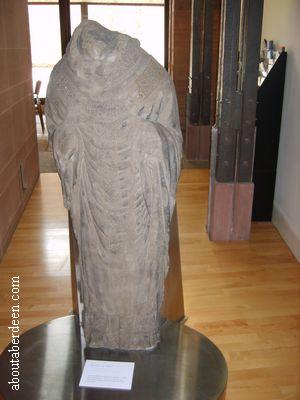
Stone of Destiny
Arbroath Abbey continued to play an historic part of Scottish history when on Christmas Day 1950 the Stone of Destiny (also known as the Coronation Stone and Stone of Scone) was removed from Westminster Abbey by Scottish students and was found by police at the high altar of Arbroath Abbey on the 11th April 1951.
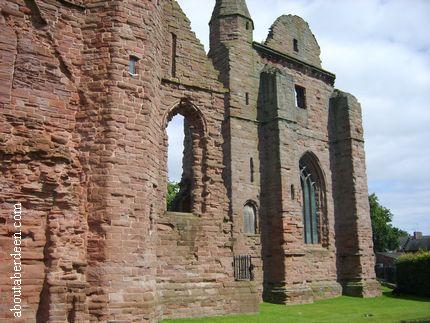
South Transept
These days the tour of Arbroath Abbey takes visitors to the South Transept whose wall joined the Cloister Range and was famed for its acoustics. Upper floors housed the monks dormitory so that they had easy access to the stairs for services during the night. The gable contains the Round O which has become a famous landmark for Arbroath. The Round O was rebuilt by the Scottish engineer Robert Stevenson in 1809 when he was constructing the Bell Rock Lighthouse for the county of Angus.
The Sacristy
Walking into the Sacristy, where the priests stored their vestment and books and went to prepare for a service you should be able to see a small hollow in the sandstone wall. This is a wall cupboard known as aumbries. This large purpose built sacristy was built by the Abbot Walter Paniter in the mid 1400s.
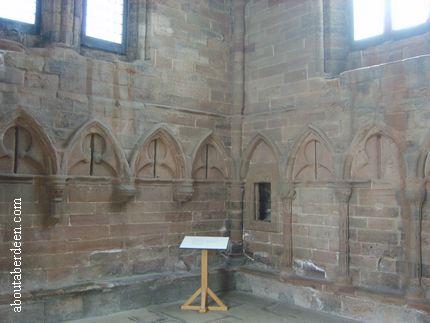
In the 18th century when the buildings in Arbroath Abbey was used as a lunatic asylum the Sacristy room was renamed after the last occupant and called Jenny Batter's Hole.
The stairs would have led to the upper floor where the treasury would have been located.
The Presbytery
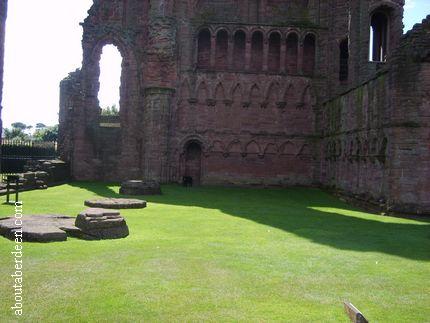
Cloister
The cloister of ArbroathAbbey was an open courtyard area with the monks buildings around it. It gave access to many of the buildings used each day by the monks.
Chapter House
The main work of the monks was performed in the Chapter House

Refectory
The Refectory is where the monks ate and the kitchens were immediately next to them. Monks were noted for their hygiene which was unusual for the period. They would wash their hands in the lavatorium, which was the name for hand basin, before stepping into the refectory.
Abbot's House
It was normal practice in Monasteries for the Abbot to have a residence within the area but slightly apart from the monks. Arbroath Abbey was no different and the Abbot's House was located opposite the kitchen in the west range.

A decorated screen called a retable can be viewed in the Abbot's House. Each retable would have been used to decorate the altar.
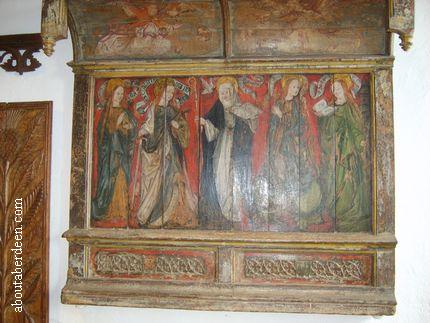
Panelling on the wall dates back to the 16th century. The ground floor was built with stone flooring whilst the first floor was made more comfortable for the Abbot. Today's visitor's can see a reproduction of what the Abbot's room would have looked like as in the picture below.
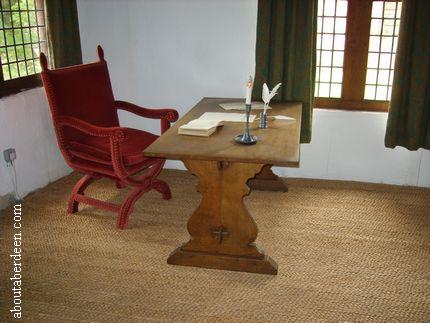
Gatehouse
The gatehouse would have had a portcullis and the building was built like a Regality Tower with a hall and small bedchamber thought to have been used by senior monks.
Visitor Centre
The Arbroath Abbey tour now continues into the visitor centre which opened in 2003. It contains many relics from Arbroath Abbey which includes a 14th century six arced drinking cup and a 14th century carved figure less its head which was found in the year 1815 in the North West tower. A quiz sheet for children can be obtained from the Historic Scotland guides. The upper floor of the Arbroath Abbey visitor centre has a large model of Arbroath Abbey which lights up to highlight where each area can be found. There is also a huge game of chess to keep the kids entertained.
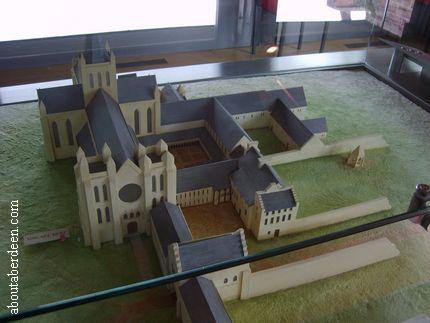
There is a small cafe selling hot drinks, cold drinks and ice-cream on the ground floor and a picnic area that overlooks the front of Arbroath Abbey. Toilets and a disabled toilet can be found to the rear of the visitor centre.
The opening hours and admission prices of Arbroath Abbey can be found at the Historic Scotland website www. historic-scotland.gov.uk
Arbroath Abbey Photographs
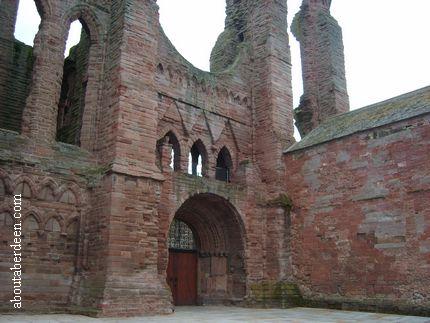

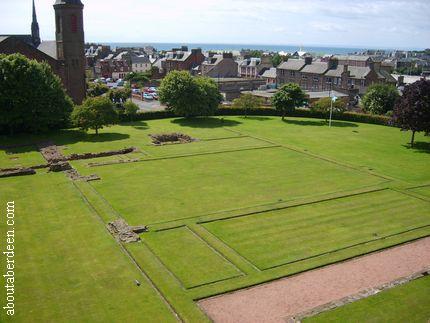
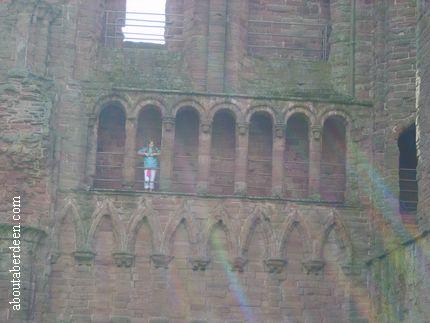

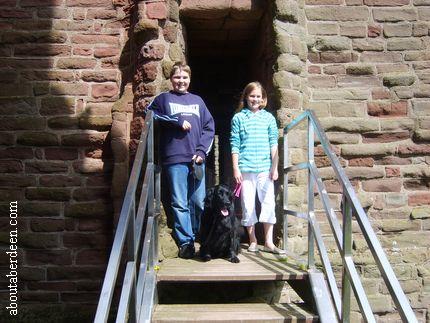
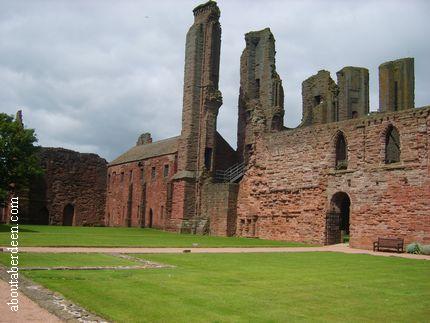
More Scottish Tourist Attractions.
Churches and Cathedrals.
Arbroath Abbey
Photographs of Arbroath Abbey with a history of Arbroath Abbey and visitor information. Includes details and photos of the Declaration of Arbroath.
Arbroath Abbey in Scotland is located near the town centre of Arbroath on Abbey Street and is easily signposted. There is parking and several disabled car park spaces immediately outside Arbroath Abbey. A larger council run car park can be found to the left of the Abbey and is only a few minutes walk away.

Follow us on: Instagram, X and Facebook.
Contact Me.
My new novel:

The Aberdeen skies are under attack from an enemy jet. It is spilling a strange yellow smoke. Minutes later, people start killing each other.
Former Royal Air Force Regiment Gunner Jason Harper witnesses this and then his wife, Pippa, telephones him, shouting that she needs him. They then get cut off. He sets straight out, unprepared for the nightmare that unfolds during his journey. Everyone seems to want to kill him.
Along the way, he pairs up with fellow survivor Imogen. But she enjoys killing the living dead far too much. Will she kill Jason in her blood thirst? Or will she hinder his journey through this zombie filled dystopian landscape to find his pregnant wife?
The Fence is the first in this series of post-apocalyptic military survival thrillers from the torturous mind of local horror and science fiction novel writer C.G. Buswell.
Download Now.
Buy the Paperback.
Entrance to Arbroath Abbey is via the Historic Scotland visitor centre and gift shop. A guide book is available and Historic Scotland members can claim 20% off the price of this and anything else bought in the souvenir shop.
Arbroath Abbey is now in ruins but a tour around gives visitors an idea of how magnificient this Abbey would have been. As can be seen in the aboutaberdeen photos on this review page parts of the Abbey can still be accessed. The outside is suitable for disabled visitors though there are many stairs to access parts of the ruins.

History of Arbroath Abbey
The history of Arbroath Abbey dates back to the year 1178 when King William I founded the monastery. As well as expanding his control through Scotland he wanted to honour the memory of his childhood friend Saint Thomas Becket who was murdered on 29 December 1170 in Canterbury Cathedral in England. Arbroath Abbey was built to what could be described as Gothic Architecture with three towers and the length of the Abbey was about 90 metres. The dedication of the church took place on the 8 May 1233. The two flanking towers were identical but the North Tower was raised after storm damage in 1272 which also destroyed parts of St Andrews Cathedral.

Modern visitors to Arbroath Abbey enter the are through a glass door at the visitor centre and this gives access directly to the nine bay nave where the remains of column pillars can be seen. This are was the only part of the Abbey that the laity would have had access.
Tironensian monks from Kelso Abbey in the Scottish Borders were invited by King William I whose nicknames were the Lion, Garbh (the Rough) and King of Scots. The monks thrived and the town of Arbroath expanded and they were largely responsible for the maintenance of Arbroath Harbour. So large did Arbroath Abbey become about 35 parish churches evolved around it.

King William I died at Stirling on 4 December in 1214 and was buried at Arbroath Abbey. He was succeeded by his son Alexander II.
There were many Abbots of Arbroath. This included Cardinal Beaton whose murder and ghost can be read on the aboutaberdeen Ethie Castle and St Andrews Ghost pages. Notorious Abbots included Robert the eighth Abbot who was expelled by his monks in the year 1267.
Declaration of Arbroath
The Declaration of Arbroath for Scottish independence from the English was written on 6 April 1320 by a clerk of the Abbot Bernard who was the Chancellor of King Robert I. The document that was written in Latin is on display at Arbroath Abbey and can be seen in the photo below. It was dispatched to Rome to Pope John XXII and the seals of 51 magnates and nobles were inserted to the bottom of the letter.


Have you seen my beautiful golden retriever Lynne out and about in Aberdeen? Ask her for a high-five! She's a Bravehound PTSD assistance dog, so we'll often be in shops, restaurants, and the cinema together.
We've written a book where I talk about growing up in Aberdeen and then joining the army to be a medic and nurse, and developing military Post Traumatic Stress Disorder.
I also talk about losing my son to suicide and the therapy I have had at Royal Cornhill Hospital and grief support groups in Aberdeen.
The author, Damien Lewis, said of Lynne:
"A powerful account of what one dog means to one man on his road to recovery. Both heart-warming and life-affirming. Bravo Chris and Lynne. Bravo Bravehound."
Download.
Buy the paperback.
During the 1400s a sacristy was built into the Abbey Church by Abbot Walter Paniter. He also helped to improve the standards in Scotland's Benedictine Monasteries.
During the Protestant Reformation of 1560 ArbroathAbbey began to decline though the Abbot's House largely survived because it had an alternative use as a Manse for the Parish Church. In later years it became a thread factory and then a school. Many other buildings were not so lucky. For example all of the infirmary and some of the cloister was demolished. The burial ground used exclusively for the monks was thereafter used as a graveyard for Arbroath.

Dr Johnson visited Arbroath Abbey in 1773 and described it as Ancient magnificence. By this time locals were in the habit of using the building material for their own uses. It was not until 1815 that the historical importance of Arbroath Abbey was recognised. Money for conservation was provided by the Barons of the Exchequer. During this time a marble effigy was discovered that is thought to be a depiction of William the Lion.

Stone of Destiny
Arbroath Abbey continued to play an historic part of Scottish history when on Christmas Day 1950 the Stone of Destiny (also known as the Coronation Stone and Stone of Scone) was removed from Westminster Abbey by Scottish students and was found by police at the high altar of Arbroath Abbey on the 11th April 1951.

South Transept
These days the tour of Arbroath Abbey takes visitors to the South Transept whose wall joined the Cloister Range and was famed for its acoustics. Upper floors housed the monks dormitory so that they had easy access to the stairs for services during the night. The gable contains the Round O which has become a famous landmark for Arbroath. The Round O was rebuilt by the Scottish engineer Robert Stevenson in 1809 when he was constructing the Bell Rock Lighthouse for the county of Angus.
The Sacristy
Walking into the Sacristy, where the priests stored their vestment and books and went to prepare for a service you should be able to see a small hollow in the sandstone wall. This is a wall cupboard known as aumbries. This large purpose built sacristy was built by the Abbot Walter Paniter in the mid 1400s.

In the 18th century when the buildings in Arbroath Abbey was used as a lunatic asylum the Sacristy room was renamed after the last occupant and called Jenny Batter's Hole.
The stairs would have led to the upper floor where the treasury would have been located.
The Presbytery

Cloister
The cloister of ArbroathAbbey was an open courtyard area with the monks buildings around it. It gave access to many of the buildings used each day by the monks.
Chapter House
The main work of the monks was performed in the Chapter House

Refectory
The Refectory is where the monks ate and the kitchens were immediately next to them. Monks were noted for their hygiene which was unusual for the period. They would wash their hands in the lavatorium, which was the name for hand basin, before stepping into the refectory.
Abbot's House
It was normal practice in Monasteries for the Abbot to have a residence within the area but slightly apart from the monks. Arbroath Abbey was no different and the Abbot's House was located opposite the kitchen in the west range.

A decorated screen called a retable can be viewed in the Abbot's House. Each retable would have been used to decorate the altar.

Panelling on the wall dates back to the 16th century. The ground floor was built with stone flooring whilst the first floor was made more comfortable for the Abbot. Today's visitor's can see a reproduction of what the Abbot's room would have looked like as in the picture below.

Gatehouse
The gatehouse would have had a portcullis and the building was built like a Regality Tower with a hall and small bedchamber thought to have been used by senior monks.
Visitor Centre
The Arbroath Abbey tour now continues into the visitor centre which opened in 2003. It contains many relics from Arbroath Abbey which includes a 14th century six arced drinking cup and a 14th century carved figure less its head which was found in the year 1815 in the North West tower. A quiz sheet for children can be obtained from the Historic Scotland guides. The upper floor of the Arbroath Abbey visitor centre has a large model of Arbroath Abbey which lights up to highlight where each area can be found. There is also a huge game of chess to keep the kids entertained.

There is a small cafe selling hot drinks, cold drinks and ice-cream on the ground floor and a picnic area that overlooks the front of Arbroath Abbey. Toilets and a disabled toilet can be found to the rear of the visitor centre.
The opening hours and admission prices of Arbroath Abbey can be found at the Historic Scotland website www. historic-scotland.gov.uk
Arbroath Abbey Photographs







More Scottish Tourist Attractions.
Churches and Cathedrals.
© Site contents copyright AboutAberdeen.com 2004-2026. All rights reserved. Privacy Policy / Disclaimer
